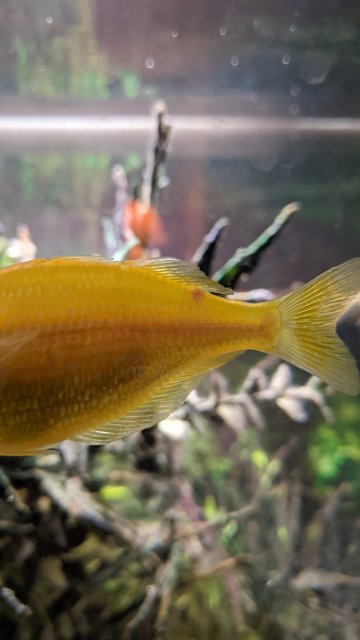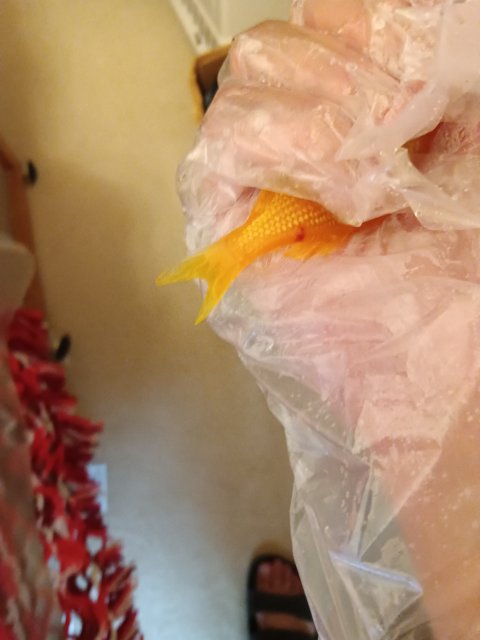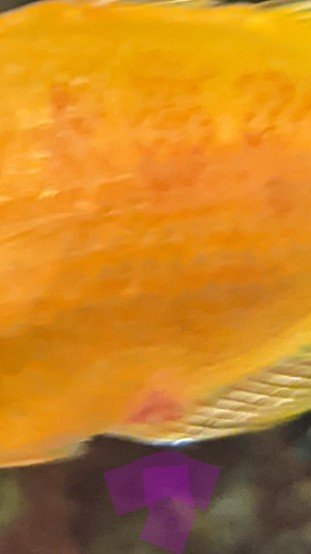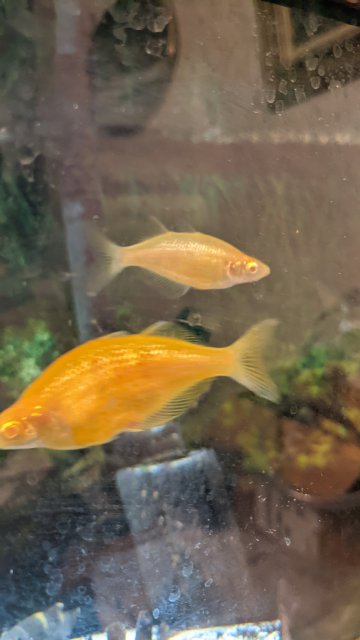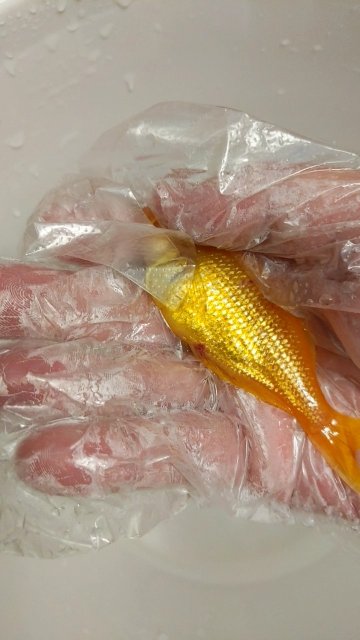Just wanted to update. I came back from that vet appointment. The staff was friendly despite some bad reviews. I feel better in that I did something and have a professional giving me a plan to follow. The Vet did a Gill, Fin and Mucous Cytology. Part of me wishes I brought the Dority male b/c it had white ick looking marks on it's tail. When I showed the pic, the Vet suspected that could be a parasite. I guess I could have had that fish analyzed but it would have cost double.
Vet Office discussion/findings:
From the green female, the Vet did not find any external parasites. She said its hard to tell if it could be cytomegalovirus or something worse and incurable like mycobacteria as someone had speculated before. I was giving Ceftazidime (Fortaz) to inject intramuscularly once every 3 days. The tech showed me how to do it. I grab the fish with gloves and/or a net, and inject this .01ml amount just into the muscle near side of spine by dorsal fin. The plan seems to be to see if this 7 treatment antibiotic does anything and recheck in 3 weeks.
If one of the fish dies, and I want answers, I can bring the body in or if one is really bad, just sacrifice the fish to be tested.
Testing & Cost effectiveness:
This is where it starts to be cost prohibitive to keep going down this path. The only reason I've been willing to even go see this fish vet is to figure out what is going on because I've just been going nuts worrying about it.
They have to call the lab for Cytomegalovirus test estimate but just the TB PCR for Mycobacterium would cost $348, plus the virus test.
The initial visit already cost $182. Just putting this so if anyone ever considers this route, they have an idea of cost. $78 for exam/consultation. $77 for Lab: Gill, Fin & Mucous Cytology. $20 Fortaz 50 mg/ml. $7 for insulin syringes.
I guess I'd be willing to spend this much to see if I have fish TB in the tank b/c that would mean I just wouldn't add anymore fish to my display. The vet even mentioned culling everything as a possible option to not risk my health or having fish with lesions suffer. If this ends up being the case, I think I'd just let my clown loaches live until they showed symptoms and just not add any more fish that could be infected.
Obviously, this isn't cost effective unless one has thousand dollar koi or stingrays or something. I figured piece of mind and my 29 year old clown loaches are worth figuring this out.
Swim Bladder rainbow:
Over the past few days, the scraped side rainbow was in the bottom corner. When I fed frozen food, I saw that he had developed a swim bladder issue and can't really move around. He'll probably die shortly as he couldn't or wouldn't even eat any of the frozen food pieces.
This is where I have to decide if I'd pay the $400 to get that fish tested. I'm thinking not as it doesn't have any symptoms right now. The columnaris back growth went away during the salt treatment.
If the green milleium female that is being treated with the antibiotics dies, I think I'll pay to have her tested since she is the one in the worst conditions with the lesions.
Vet Office discussion/findings:
From the green female, the Vet did not find any external parasites. She said its hard to tell if it could be cytomegalovirus or something worse and incurable like mycobacteria as someone had speculated before. I was giving Ceftazidime (Fortaz) to inject intramuscularly once every 3 days. The tech showed me how to do it. I grab the fish with gloves and/or a net, and inject this .01ml amount just into the muscle near side of spine by dorsal fin. The plan seems to be to see if this 7 treatment antibiotic does anything and recheck in 3 weeks.
If one of the fish dies, and I want answers, I can bring the body in or if one is really bad, just sacrifice the fish to be tested.
Testing & Cost effectiveness:
This is where it starts to be cost prohibitive to keep going down this path. The only reason I've been willing to even go see this fish vet is to figure out what is going on because I've just been going nuts worrying about it.
They have to call the lab for Cytomegalovirus test estimate but just the TB PCR for Mycobacterium would cost $348, plus the virus test.
The initial visit already cost $182. Just putting this so if anyone ever considers this route, they have an idea of cost. $78 for exam/consultation. $77 for Lab: Gill, Fin & Mucous Cytology. $20 Fortaz 50 mg/ml. $7 for insulin syringes.
I guess I'd be willing to spend this much to see if I have fish TB in the tank b/c that would mean I just wouldn't add anymore fish to my display. The vet even mentioned culling everything as a possible option to not risk my health or having fish with lesions suffer. If this ends up being the case, I think I'd just let my clown loaches live until they showed symptoms and just not add any more fish that could be infected.
Obviously, this isn't cost effective unless one has thousand dollar koi or stingrays or something. I figured piece of mind and my 29 year old clown loaches are worth figuring this out.
Swim Bladder rainbow:
Over the past few days, the scraped side rainbow was in the bottom corner. When I fed frozen food, I saw that he had developed a swim bladder issue and can't really move around. He'll probably die shortly as he couldn't or wouldn't even eat any of the frozen food pieces.
This is where I have to decide if I'd pay the $400 to get that fish tested. I'm thinking not as it doesn't have any symptoms right now. The columnaris back growth went away during the salt treatment.
If the green milleium female that is being treated with the antibiotics dies, I think I'll pay to have her tested since she is the one in the worst conditions with the lesions.



